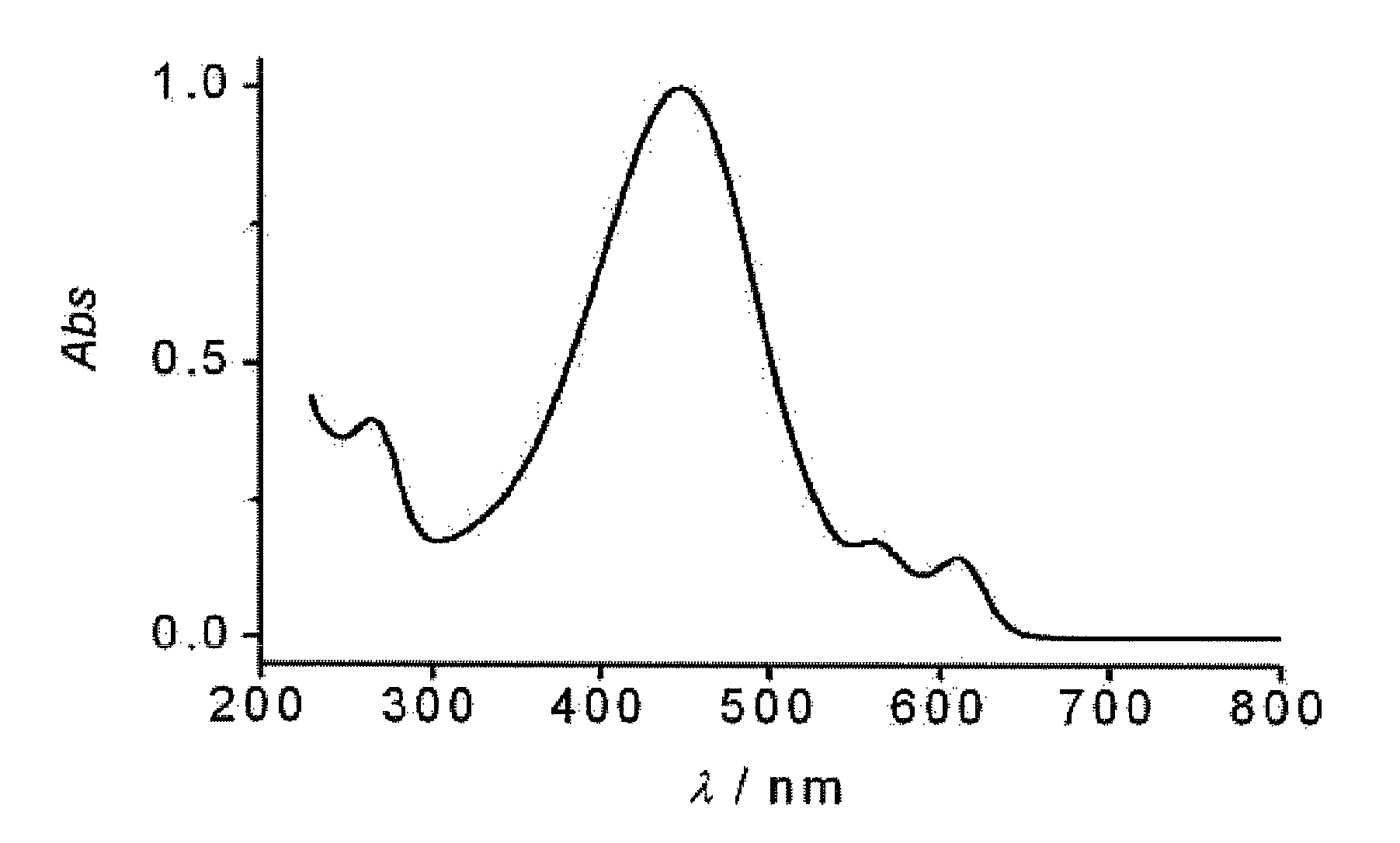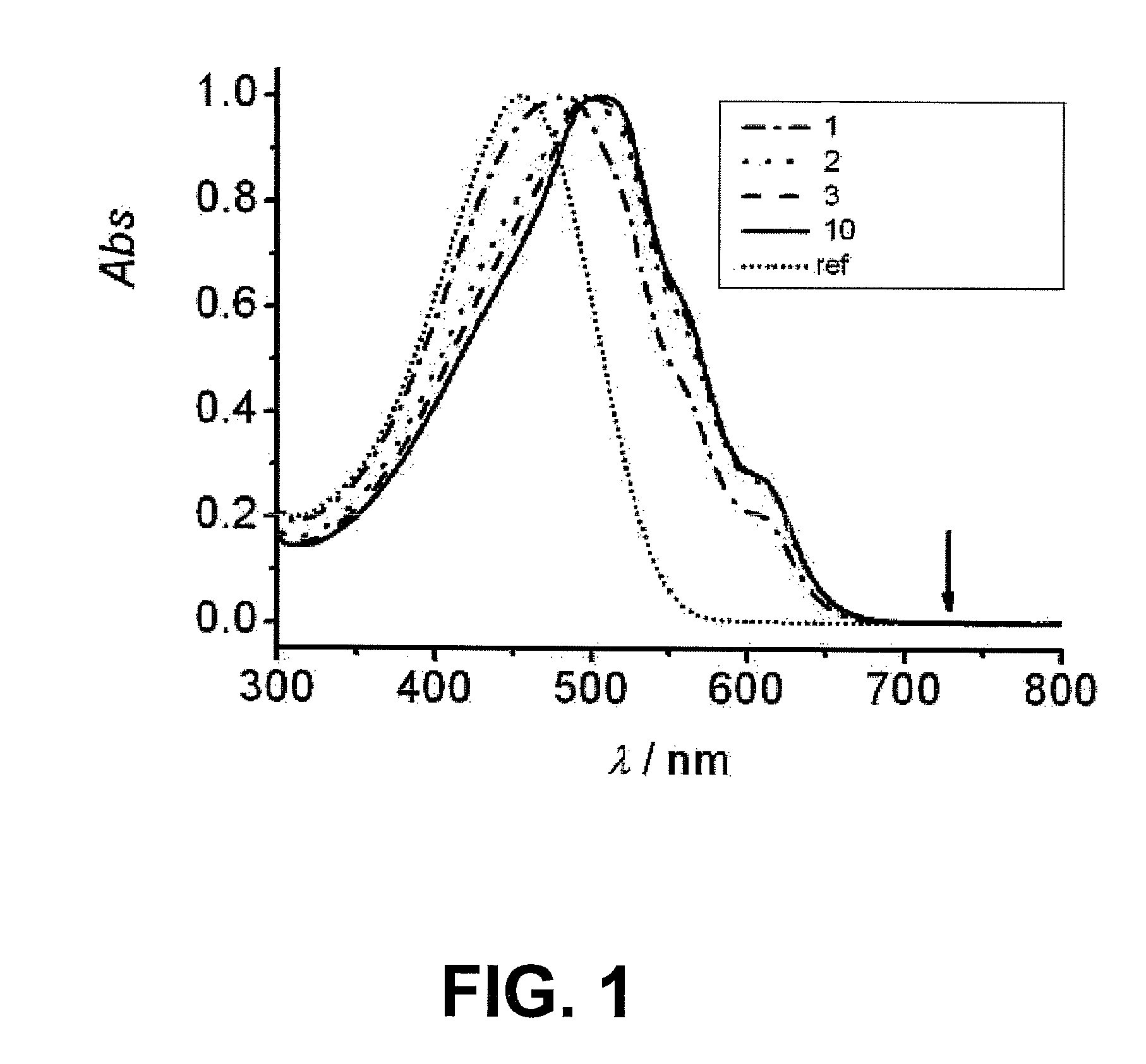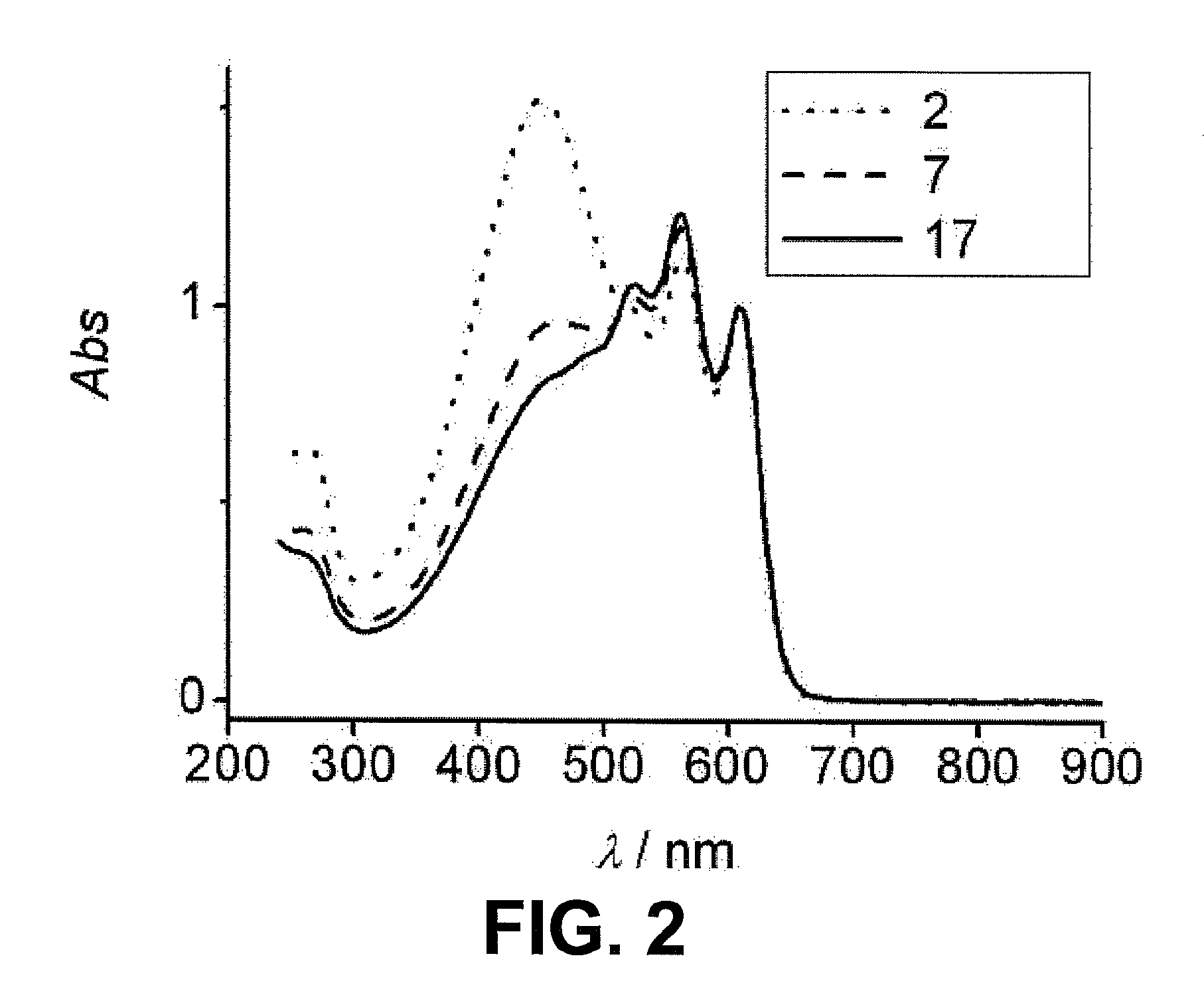Methods for controlling the crystalline nanofibre content of organic layers used in organic electronic devices
a technology of organic electronic devices and nanofibers, which is applied in the field of organic electronics, can solve the problems of labor-intensive and tedious control of nanofiber content using this method, and achieve the effect of convenient and quick
- Summary
- Abstract
- Description
- Claims
- Application Information
AI Technical Summary
Benefits of technology
Problems solved by technology
Method used
Image
Examples
example 1
Preparation of a Mother Polymer Dispersion Based on P36T
[0147]5 mg of regioregular poly(3-hexylthiophene) having a Mn of 23700 g / mol and a Mw of 42700 g / mol [determined relative to poystyrene standards in chlorobenzene at 60° C.] were dissolved in 10 g of heated cyclohexanone at 150° C. under agitation until total dissolution of the polymer (clear orange solution).
[0148]This dissolution corresponds to the step (a) of forming a solution by dissolving a nanofibre-forming polymer in a solvent at a temperature T1 high enough to enable the formation of said solution.
[0149]During the process of dissolution, the solution was protected from light and air, to avoid chemical oxidation and / or photo-oxidation. After the total dissolution of the nanofibre-forming polymer, the solution was slowly cooled to 50° C. The speed of cooling was approximately 20° C. / hour. At 50° C. the solution was filtered through a porous membrane (typically a teflon® filter membrane with a 0.45 μm porosity) to remove ...
example 2
Preparation of Polymer Dispersions Based on Regioregular P3mT with Adjustable Nano-Fiber Contents According to an Embodiment of the Present Invention
[0151]Mother Polymer dispersions were made according to example 1 but choosing from 25 solvents and 7 polymers of the general formula (I):
[0152]
wherein R is a linear alkyl chain having from 3 to 9 carbon atoms. The 61 combinations solvent / polymer (see table below wherein m indicates the number of carbon atoms in the R group) were tested for various concentrations of polymer (I) (from 0.001 wt % to 5 wt %, see FIG. 4) and dispersions comprising crystalline nanofibres of the nanofibre-forming polymer (I) were obtained without aggregates upon cooling as described for example 1. In FIG. 4, curves 1 to 6 relates respectively to the use of the following solvents: tetralin, 1,2,4-trimethylbenzene, p-xylene, decaline, chorobenzene and cyclohexanone; the integer n (X-axis) indicates the number of carbons in the R chain; the Y-axis indicates the ...
example 3
Preparation of a Polymer Composition with Different Nano-Fiber Contents in Active Layers (General Procedure)
[0159]Polymer compositions were made by adding PCBM to the wanted mother polymer dispersion obtained in accordance with example 2, in this example P3alkylT:PCBM in a pre-defined weight ratio. These polymer compositions were stirred with a magnetic stirrer for 2 days at room temperature. Then the polymer composition was put in a heating block under continuously stirring and heated until a temperature T3 above 20° C. was reached. The solution was left for at least one hour at this temperature T3 (to obtain a new fibre content equilibrium). A very small amount of the polymer composition at the temperature T3 (about 45 μl) was taken and diluted in about 3 ml of solvent in order to determine the exact crystalline nanofibre content of the polymer composition by UV-Vis or by GPC.
[0160]Then about 300 μl to 400 μl of the solution was spin-coated to make an active layer from the polymer...
PUM
| Property | Measurement | Unit |
|---|---|---|
| temperature T1 | aaaaa | aaaaa |
| temperature T1 | aaaaa | aaaaa |
| temperature T1 | aaaaa | aaaaa |
Abstract
Description
Claims
Application Information
 Login to View More
Login to View More - R&D
- Intellectual Property
- Life Sciences
- Materials
- Tech Scout
- Unparalleled Data Quality
- Higher Quality Content
- 60% Fewer Hallucinations
Browse by: Latest US Patents, China's latest patents, Technical Efficacy Thesaurus, Application Domain, Technology Topic, Popular Technical Reports.
© 2025 PatSnap. All rights reserved.Legal|Privacy policy|Modern Slavery Act Transparency Statement|Sitemap|About US| Contact US: help@patsnap.com



